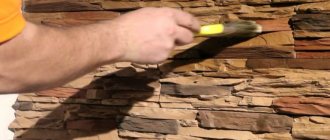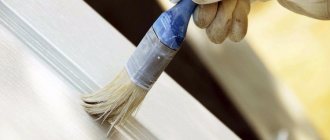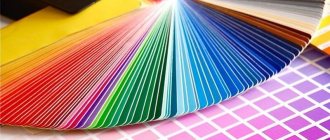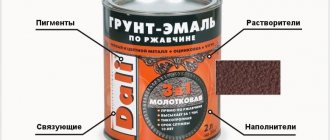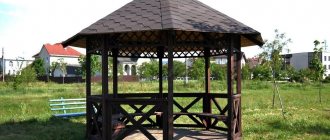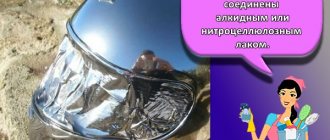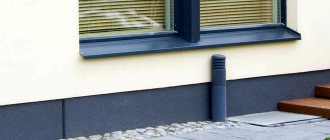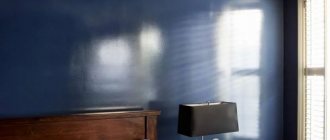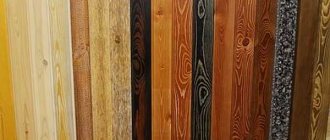Composition and characteristics
Chrome paint is available in several varieties, each of which helps create a high-quality effect on the surface. Dyes of black and other colors are available either in jars or in spray form. Standard cylinders are used; they are most suitable for doing independent work.
The metal powder in an aerosol, which is part of any such material, is highly reflective. Among the important characteristics that chrome paint has are high strength and heat-resistant protection.
A particularly popular option is powder paint in cans, using aluminum powder as its base.
The main filler of such compositions is tiny particles with a metal base. Alkyd or nitrocellulose base varnishes are added to the product. They are needed to form reliable connections when applied.
A mirror-like, reflective surface is provided not only through the use of powder. This is facilitated by the original properties of the composition, which allow the material to be distributed evenly over the surface.
Chrome plating, compared to standard materials, looks more attractive. Also, using this coloring you can hide minor defects and rust.
Coating options
There are several types of coatings, depending on the ingredients used:
- The classic version of painting chrome on metal is the most common. These are compositions with a white mirror shine. They are similar in appearance to polishing silver. Additional dyes are not used in this case. The chrome effect is ensured without them.
- The gold version of chrome plating is also quite common on the market. The paint contains yellow metal particles, which makes it possible to obtain a noble shade. The mirror gold metallic effect appears when the composition dries completely.
- Black chrome has a very original effect created by the surface itself. There are special spray paints designed not only for car wheels, but also for plastic and various products made from it. The photo below shows the decorative effect itself.
It is possible to conduct additional experiments with colors. Heat-resistant spray paint is no exception. You just need to introduce a certain amount of pigments into chrome that have one color or another.
Any chrome paint forms a mirror-like glossy surface when it dries. It looks like liquid silver. Matte chrome is the option that differs most from previous varieties. This popular spray painting solution is used to decorate the interior.
It is necessary to slightly change the composition of the paint to achieve an unusual effect on the surface. Otherwise, painting under chrome will not achieve the desired result.
In the video: spray paint with bosny chrome effect.
Characteristics of chrome chameleon
The thermochromic variety of chrome paint, which belongs to this group, is one of the interesting compositions with unusual properties. The material is known for its ability to change color when the surface is exposed to a certain temperature. For example, matte chrome and golden chrome appear. But at the same time the property of heat resistance is preserved.
The number of colors and shades is practically unlimited. The coating can become either matte or transparent. Nickel often becomes an indispensable component of compositions.
There are two methods for classifying compounds that give the chromium effect. It is carried out depending on the process of color change, as well as on the reversibility of this process. The first characteristic allows us to distinguish three varieties:
- Initially transparent coatings that acquire a different tone with chrome when the temperature in the room deviates from the norm, up or down.
- Other types of paints, on the contrary, become transparent under the same conditions.
- And there are compositions like chrome effect, where colors can have different states, change from one shade to another.
Thermochromic paint-chrome can be reversible or irreversible. Reversible compounds can change color many times, while irreversible compounds change color only once.
High cost and labor-intensive painting process are the main reasons why such compositions have not gained popularity. Paints with a “chameleon” effect are more often used when creating souvenir products. In such cases, chrome paints are irreplaceable.
Basic shades of chrome paint
Aluminum powder in the colorant is responsible for creating the classic silver shade. To obtain other colors, chrome paint is saturated with the following ingredients:
- Gilding is crushed metal particles with a yellow tint.
- Black – aluminum powder mixed with black pigment.
- Other colors - to give a characteristic shade, dyes of the corresponding color are added to the composition.
In addition, you can give the desired shade to the finished coating by tinting the varnish, which is applied after the main layer of chrome paint has dried.
How is dyeing done?
An important stage is preparatory work with the surface. This is especially true for glossy products rather than matte ones. Even small defects can be noticeable on smooth materials; this will only harm the effect of chrome. The room must be completely free of dust during processing. Only after the necessary conditions have been met can you proceed to subsequent processing.
Liquid acrylic compositions (liquid chrome) have their own positive qualities. They are heat-resistant, able to withstand any chemical exposure, moisture in any quantity. Unlike powder compositions, liquid acrylic materials can be applied to parts of parts, creating multi-colored chrome-effect paint designs.
The workflow itself is described as follows:
- The part is first primed and then covered with a layer of black dye. The color may be different, it does not play an important role.
- Polishing is carried out after the initial layer has dried.
- Using an aerosol can, we apply paint with a chrome effect; there may be several layers.
- Each chrome layer must dry thoroughly before applying the next one.
- The final stage is varnish treatment.
Powder paint Bosny belongs to another type of composition. The elements that are included in its composition provide a chrome effect and increased durability of the coating. This option is ideal for disks.
The painting process is not particularly problematic and can be easily done in a garage. There will be four stages in total: thorough cleaning of parts, primer coating, drying, and application of powder paint.
How to paint with chrome paint correctly (2 videos)
Options for using paint (34 photos)
Chrome effect paint
INSTRUCTIONS
SURFACE PREPARATION
Base coat.
Automotive black nitro base and 2-component Acrylic varnish HS hard.
How to use:
Before application, the surface to be treated is cleaned.
Using a spray gun, apply BLACK nitrobase evenly.
Drying: 20-30 minutes.
Next is 2-component Acrylic varnish HS. (we recommend: Ceramic varnish).
Mixing: hardener in ratio (see acrylic varnish manufacturer's recommendations).
Equipment: (see acrylic varnish manufacturer's recommendations).
Application: 2 layers (wet on wet). It is necessary to achieve a perfectly smooth and maximum glossy surface without flaws. The quality of the chrome surface will depend on this in the future.
Drying: hold at room temperature for 1 hour (so that there is no shagreen) and then 1 hour/60 degrees, then leave for at least 48 hours at 20 degrees until complete polymerization.
Or at 20 degrees for at least 72-96 hours.
Remember, as the temperature drops, the drying time increases.
ATTENTION! An insufficiently dried surface can lead to further clouding of the mirror effect.
After drying, the surface CAN BE POLISHED. See instructions for use of polish. The main thing is that there should be no “risk” left on the polished surface; this will lead to a poor-quality chrome effect. After polishing, thoroughly remove any remaining polish from the surface.
For cleaning, use an alcohol cleaner (40% ethyl alcohol and 60% distilled water).
After polishing and cleaning, it is necessary to warm up the product: 1 hour/60 degrees or at least 8 hours at 20 degrees to remove static stress and evaporate residual moisture.
ATTENTION! Do not touch the treated surface.
OBTAINING THE CHROME EFFECT “Chrome Effect Premium Plus”.
Application of paint "Chrome Effect One-Component - ready for use."
Shake the material before use.
To obtain the chrome effect, it is necessary to apply the Chrome Effect product to the treated surface using an HVLP sprayer (nozzle diameter 0.8-1.2 mm, pressure 2.5-3.5 atm.).
Operating procedure:
Set the sprayer to high air supply and a small volume of material; to do this, set the regulator almost in the “closed” position.
Begin to spray Chrome Effect over the surface carefully, using light touches.
ATTENTION! Make sure that large amounts of paint do not settle on the surface, as this can negatively affect the quality, leading to a fogged mirror effect.
Continue applying Chrome Effect using light touches until the desired level of specularity is achieved.
If a small amount of the product is applied to a black substrate, a “black chrome” effect is obtained.
After the surface has dried (1-2 minutes), wipe it with a very soft microfiber cloth, using light movements without pressure.
Drying: heat the product for 60 minutes at a temperature of 60 degrees and maintain at 20 degrees for at least 8 hours. Or at 20 degrees for at least 24 hours. The longer the drying time, the more shiny the surface becomes.
APPLYING PROTECTIVE COATING
Protective varnish: automotive 2-component Acrylic varnish HS.
How to use:
Before application, the surface to be treated is cleaned with a dry, clean, soft microfiber cloth, using light movements without pressure.
Mixing: hardener in ratio (see acrylic varnish manufacturer's recommendations).
Equipment: (see acrylic varnish manufacturer's recommendations).
Application: 2 layers (1st layer by spray with an intermediate exposure of 20-30 minutes, 2nd main). Do not apply a thick layer. If this is required, then apply a subsequent layer after the product has completely dried.
For a colored chrome effect, add “Color Chrome” color pigment to the varnish in an amount of 10%-30% of the weight of the mixed varnish with the hardener.
ATTENTION! To get the “GOLD” effect, you need to add yellow pigment to the varnish and apply it only to light chrome.
Exposure: 5-10 min.
Drying: 1 hour/60 degrees or at room temperature 24 hours.
After drying, the surface CAN BE POLISHED. See instructions for use of polishing
ATTENTION! The varnish coating slightly reduces the specular reflection coefficient.
